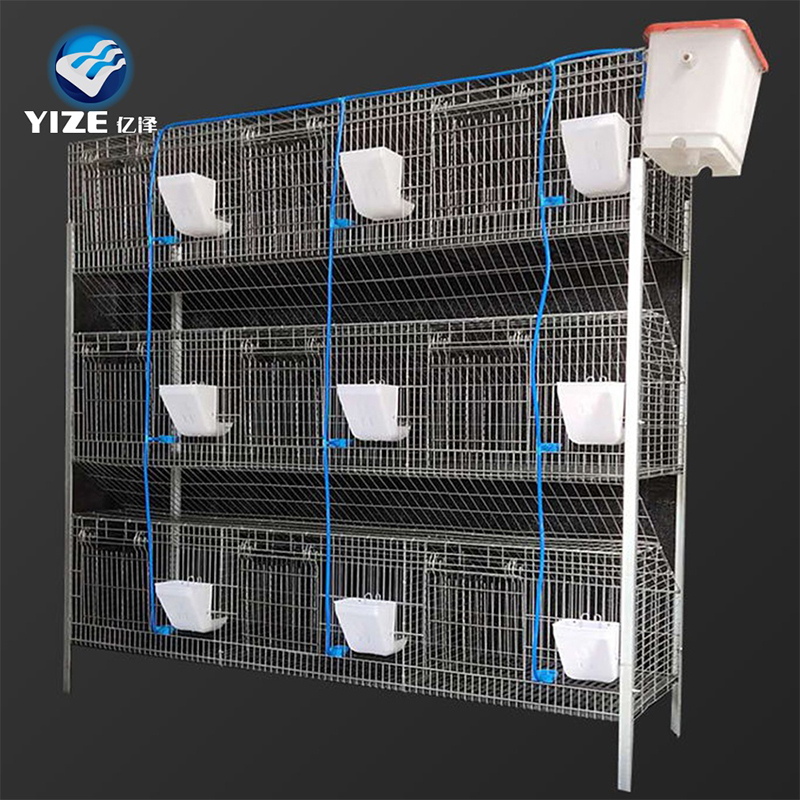Efficient Ventilation Solutions for Paint Booth Exhaust Fans in Industrial Settings
Oct . 13, 2024 09:08 Back to list
Efficient Ventilation Solutions for Paint Booth Exhaust Fans in Industrial Settings
The Importance of Paint Room Exhaust Fans in Industrial Settings
In industrial environments where paint is applied to various products, maintaining air quality is crucial. The use of paint room exhaust fans is a fundamental component of ensuring that these spaces remain safe and efficient. These specialized ventilation systems help manage the harmful vapors and particles released during the painting process, thus protecting both workers and equipment.
Understanding the Role of Exhaust Fans
Paint room exhaust fans are designed to remove contaminated air from the painting area and replace it with fresh air. This process is vital for several reasons. First and foremost, the volatile organic compounds (VOCs) emitted from paint can pose serious health risks, including respiratory issues, allergic reactions, and long-term chronic conditions. By effectively ventilating the area, exhaust fans help minimize the concentration of these harmful substances.
Apart from health safety, efficient exhaust ventilation plays a pivotal role in ensuring high-quality finishes. When paint fumes and overspray are allowed to accumulate, they can affect the application process, leading to defects such as orange peel, runs, and uneven finishes. Proper air turnover, facilitated by exhaust fans, can help maintain a clean environment conducive to achieving superior coatings.
Types of Exhaust Fans for Paint Rooms
There are several types of exhaust fans that can be employed in paint rooms, each with its advantages. The most common types include centrifugal fans and axial fans. Centrifugal fans are particularly effective at moving air against resistance, making them suitable for systems requiring high static pressure. On the other hand, axial fans are preferred for applications requiring high airflow, making them a popular choice for larger paint booths.
In addition to the type of fan, the design and configuration of the exhaust system are equally important. Systems can be designed to provide either general ventilation, which dilutes contaminants by mixing with fresh air, or local exhaust ventilation that captures fumes and particulates at their source, providing a more targeted approach.
paint room exhaust fans

Installation and Maintenance Considerations
Installing paint room exhaust fans involves considering several factors, including the size of the room, the volume of air that needs to be exchanged, and the specific types of paint being used. It’s crucial to work with HVAC professionals to ensure that the ventilation system meets the required environmental and safety standards.
Regular maintenance of exhaust fans is essential for optimal performance. This includes routine inspections, cleaning of fan blades, checking for obstructions in ductwork, and ensuring that filters are replaced as needed. Neglecting maintenance can lead to reduced airflow and efficiency, increasing the risk of hazardous conditions.
Regulatory Compliance and Best Practices
Many industries are subject to regulations regarding air quality and occupational safety, such as those implemented by OSHA (Occupational Safety and Health Administration) and EPA (Environmental Protection Agency). Compliance with these regulations is not just a legal obligation; it’s a commitment to maintaining a safe workplace. Implementing an efficient exhaust system is often a crucial part of satisfying these regulatory requirements.
Best practices for using paint room exhaust fans include monitoring air quality regularly with air sampling equipment, employing proper personal protective equipment (PPE) for workers, and providing thorough training on the safe use of materials.
Conclusion
In conclusion, paint room exhaust fans are an indispensable feature of any industrial painting operation. They serve a dual purpose safeguarding the health of workers and ensuring the quality of the paint application process. By understanding the various types of exhaust fans, implementing regular maintenance practices, and adhering to regulatory standards, businesses can create safe and efficient paint environments. Investing in adequate ventilation is not only a legal requirement but also a significant step toward fostering a productive workplace.
-
Automatic Feeding Line System - Anping County Yize Metal Products Co., Ltd.|Pan Feeder Nipple Drinker,Broiler Farming
NewsJul.30,2025
-
Automatic Feeding Line System Pan Feeder Nipple Drinker-Anping County Yize Metal Products Co., Ltd.
NewsJul.30,2025
-
Automatic Feeding Line System-Anping County Yize Metal Products Co., Ltd.|Durable Construction&Easy Maintenance
NewsJul.30,2025
-
Automatic Feeding Line System-Anping County Yize Metal Products Co., Ltd.|Pan Feeder Nipple Drinker&Durable Poultry Farming Solution
NewsJul.30,2025
-
Automatic Feeding Line System Pan Feeder Nipple Drinker|Anping County Yize Metal Products Co., Ltd.
NewsJul.29,2025
-
Automatic Feeding Line System-Pan Feeder Nipple Drinker|Anping County Yize Metal Products Co., Ltd.
NewsJul.29,2025






